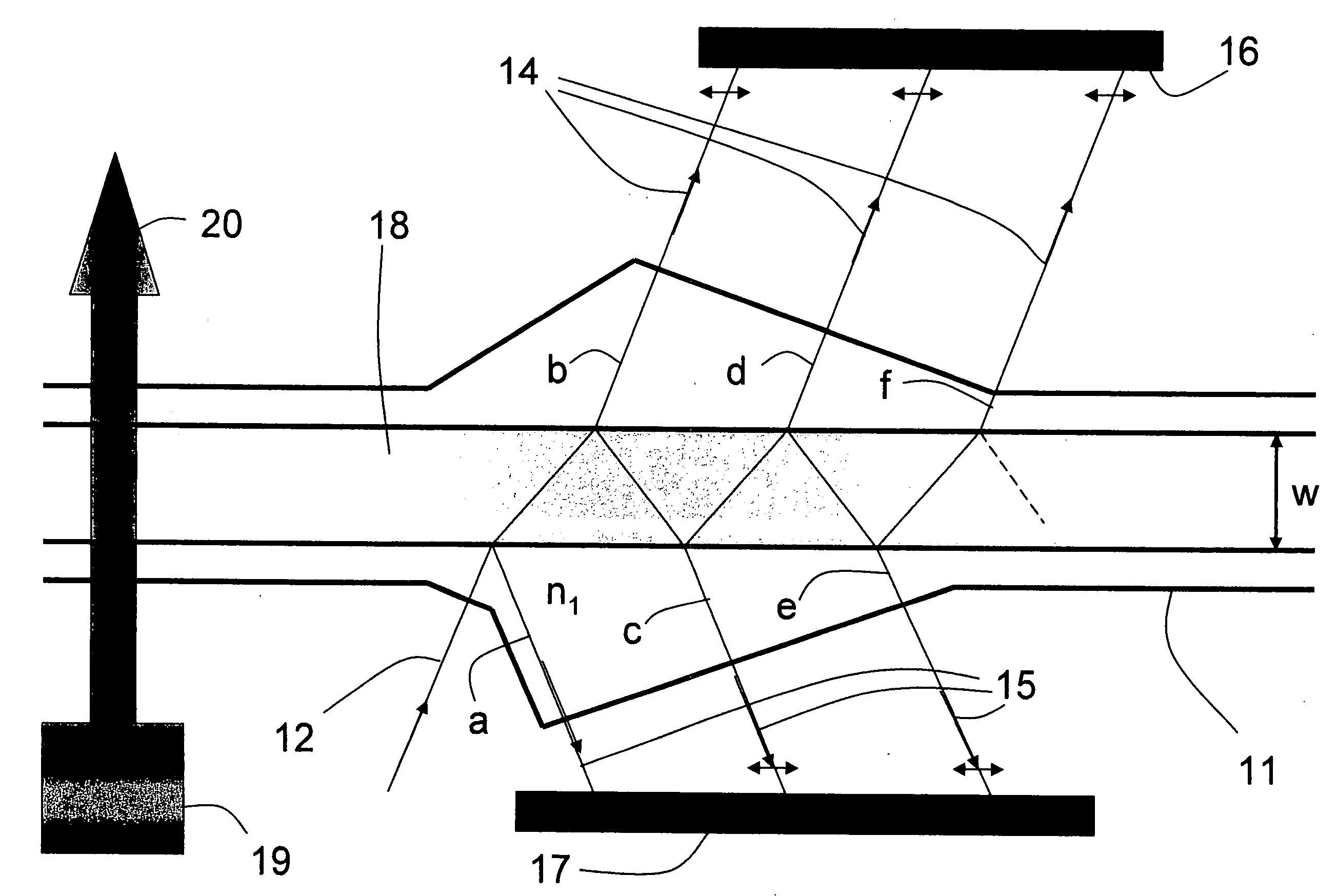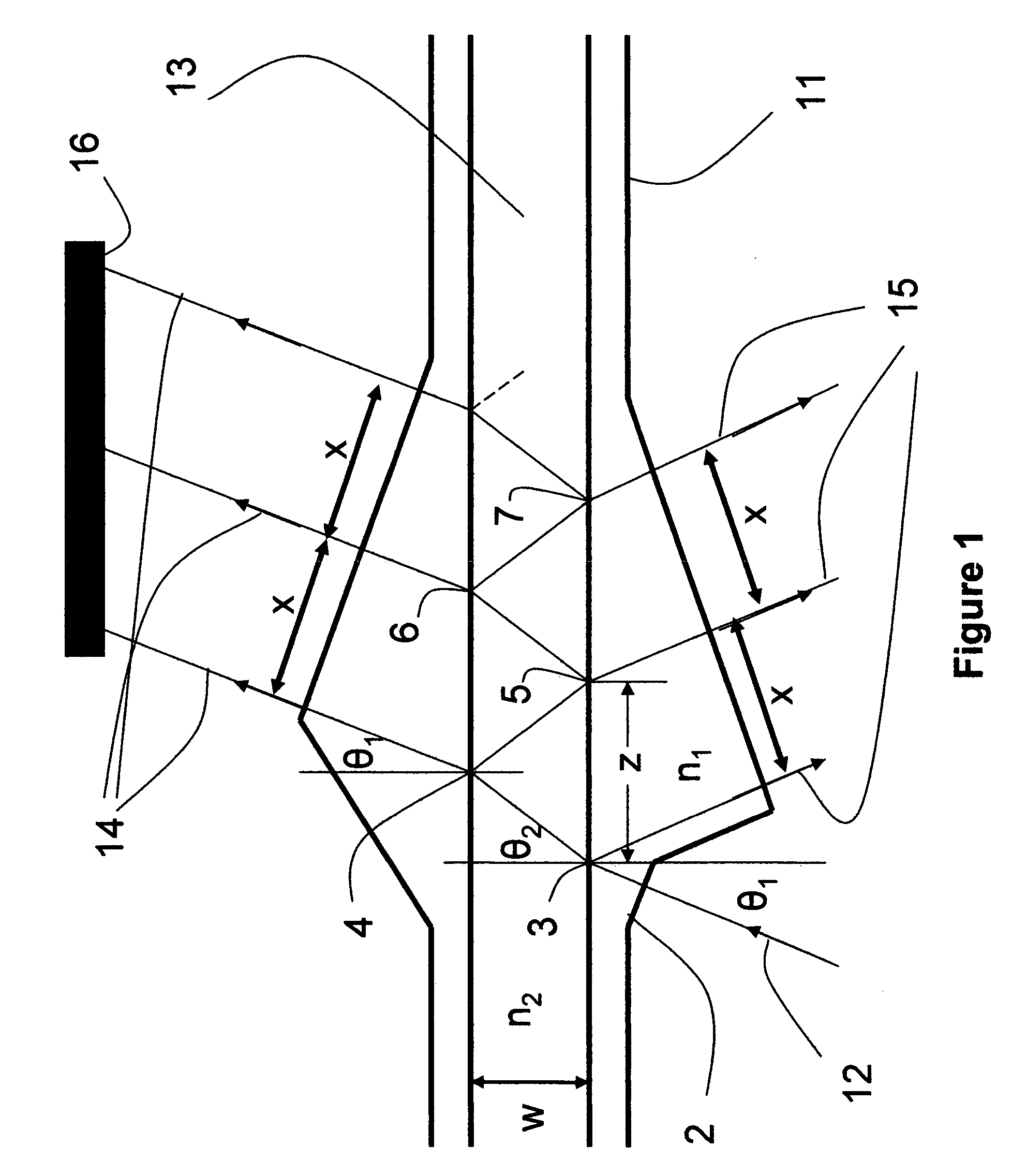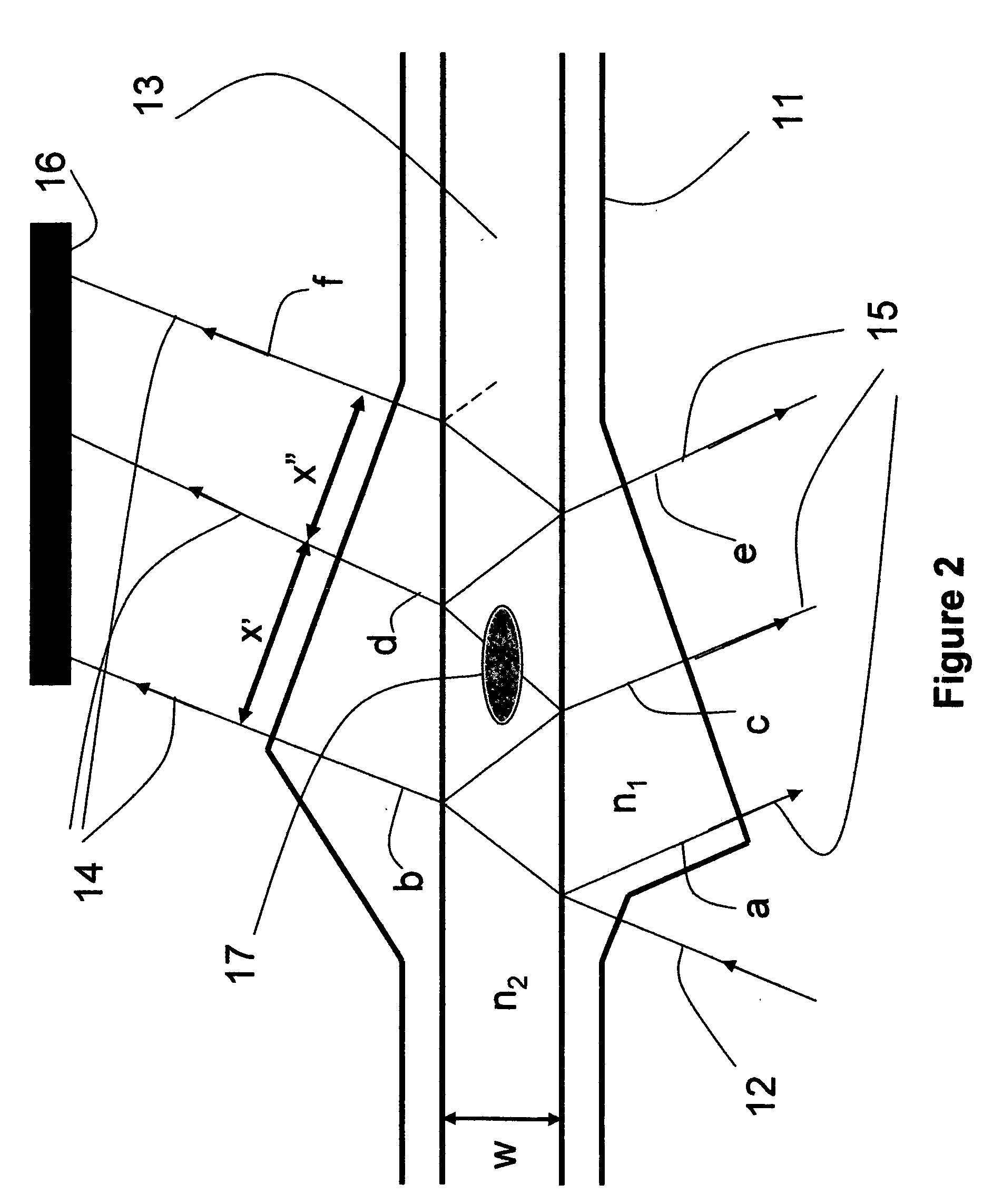Flow metering system
a flow metering and flow tube technology, applied in the direction of volume/mass flow measurement, measurement devices, instruments, etc., can solve the problems of not realizing the further advantage, process will not provide accurate flow rate, and the flow tube cross-sectional area of bornhop and yin et al. cannot accommodate the variation in the cross-sectional area of the flow tube, etc., to achieve accurate measurement of volumetric flow
- Summary
- Abstract
- Description
- Claims
- Application Information
AI Technical Summary
Benefits of technology
Problems solved by technology
Method used
Image
Examples
Embodiment Construction
[0021]FIG. 1 shows the pattern of light resulting from a single incident beam 12 on a capillary in a first embodiment of the invention. Incident beam 12 may be generated by a laser, or by an LED, or a tungsten lamp, or any other source of light sufficiently strong to provide the needed signals from detector 16. Incident beam 12 enters conduit 11 through side wall 2. One angle of incidence that avoids unwanted reflection at side wall 2 is normal incidence as shown. Incident beam 12 continues unrefracted into and through the wall of conduit 11 until it enters the fluid stream at position 3. At position 3 a portion of light beam 12 is refracted and a portion is reflected when fluid 13 has a refractive index other than the refractive index (n1) of the conduit 11. The reflected portion of incident beam 12 leaves the conduit as one of reflected beams 15. The refracted portion of incident beam 12 continues through fluid 13 until it reaches the opposite side of conduit 11 at position 4 wher...
PUM
 Login to View More
Login to View More Abstract
Description
Claims
Application Information
 Login to View More
Login to View More - R&D
- Intellectual Property
- Life Sciences
- Materials
- Tech Scout
- Unparalleled Data Quality
- Higher Quality Content
- 60% Fewer Hallucinations
Browse by: Latest US Patents, China's latest patents, Technical Efficacy Thesaurus, Application Domain, Technology Topic, Popular Technical Reports.
© 2025 PatSnap. All rights reserved.Legal|Privacy policy|Modern Slavery Act Transparency Statement|Sitemap|About US| Contact US: help@patsnap.com



